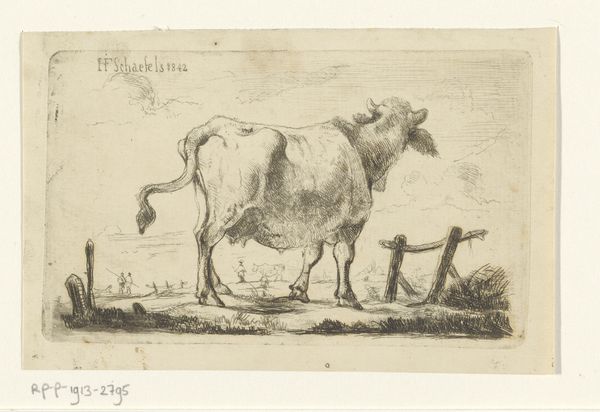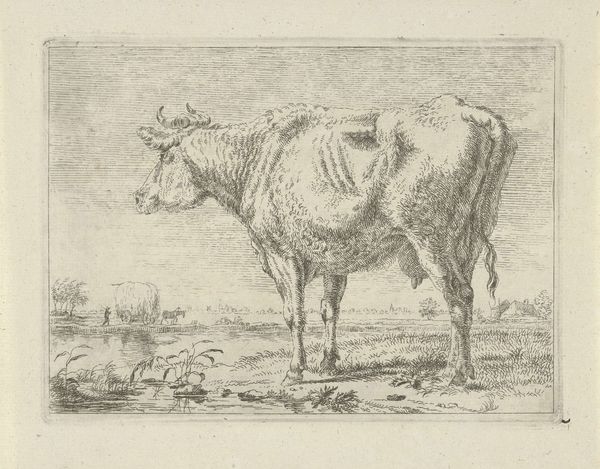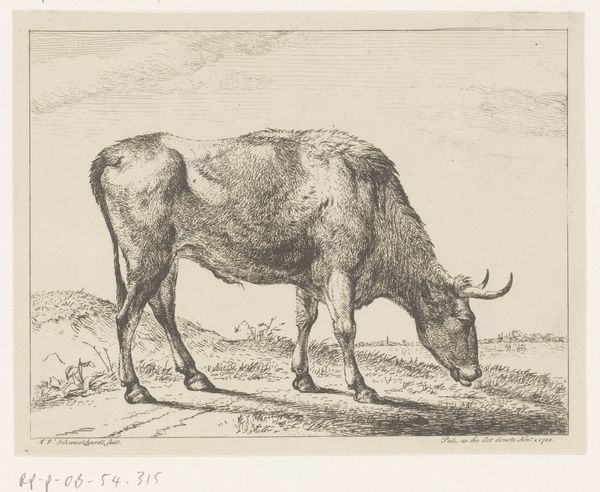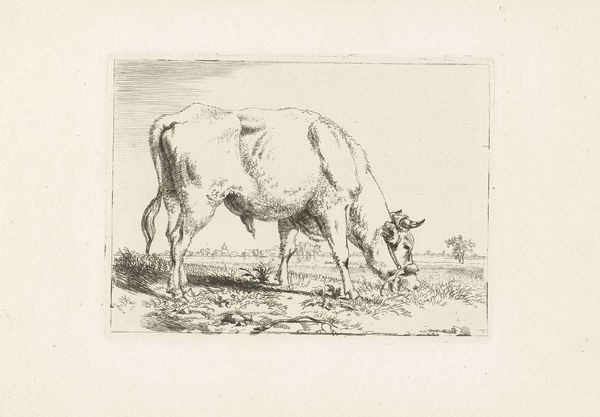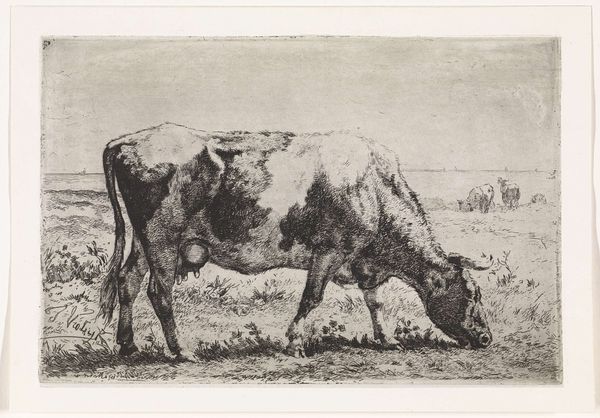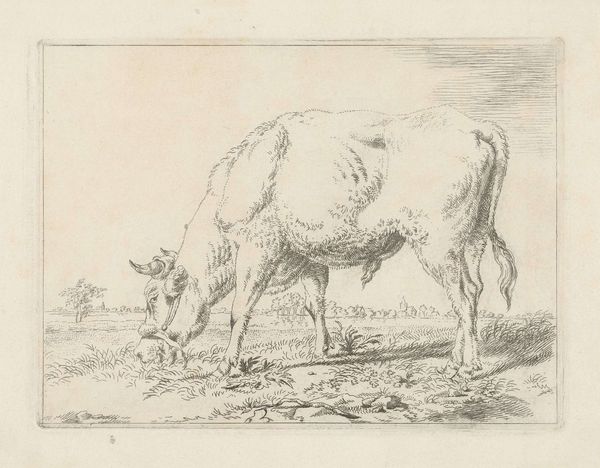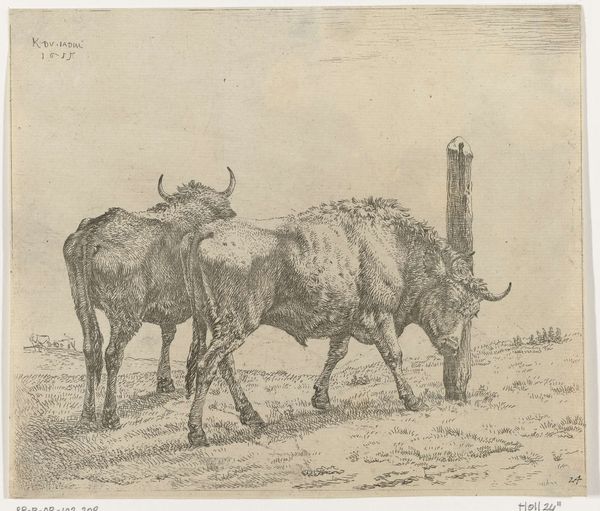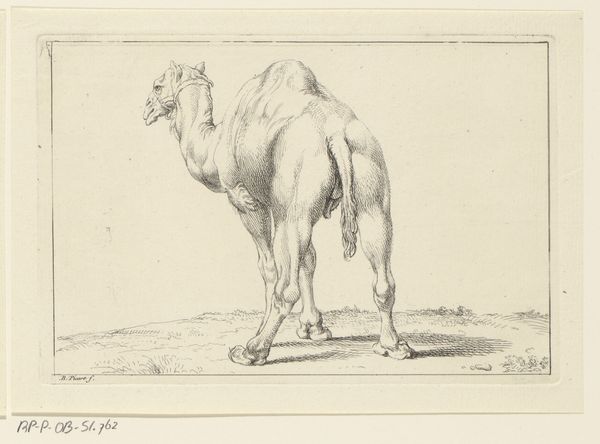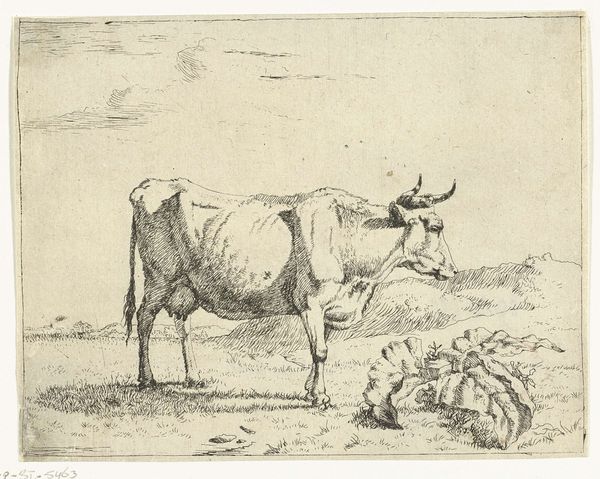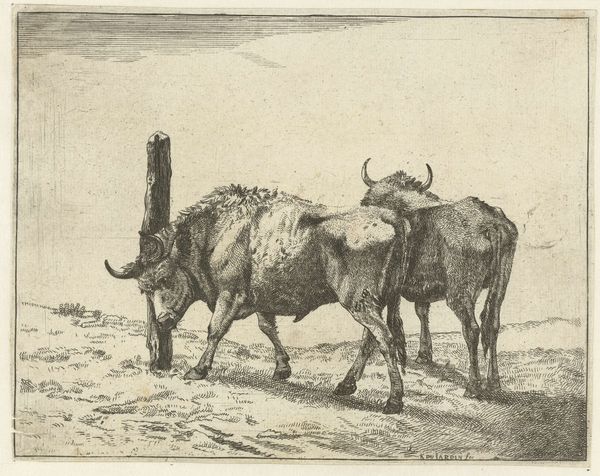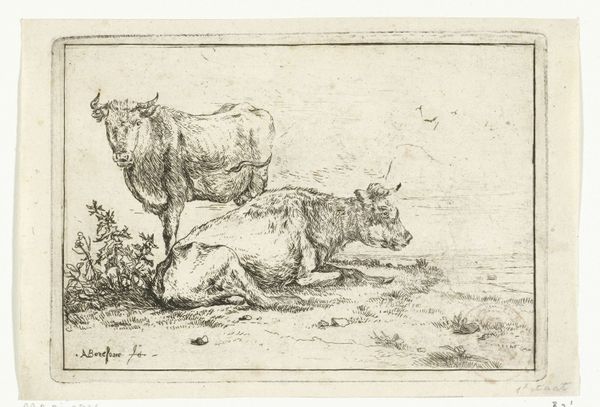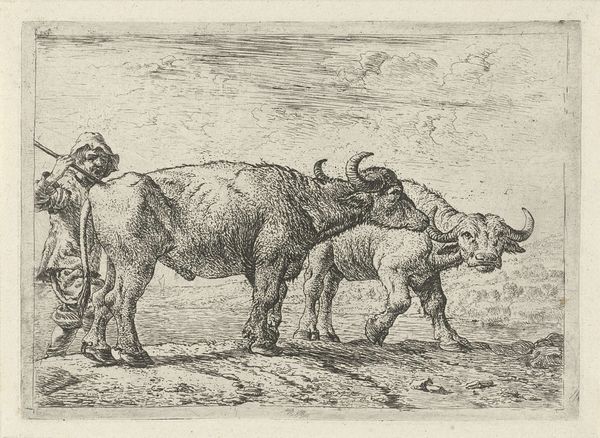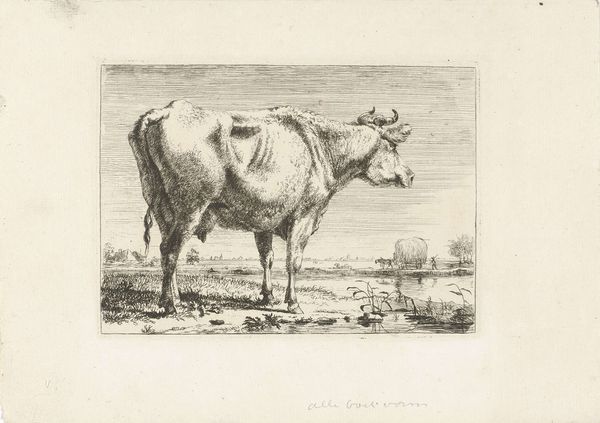
etching
#
etching
#
landscape
#
realism
Dimensions: height 170 mm, width 195 mm
Copyright: Rijks Museum: Open Domain
Curator: "Stier die zich krabt aan een boomstam," or "Bull Scratching Against a Tree Trunk," created around 1810 by Wouter Johannes van Troostwijk, is a striking etching in the collection of the Rijksmuseum. The stark realism captures a seemingly mundane scene of bovine life. What is your initial reaction? Editor: There is a subdued tension; a lonely stillness. Despite the bucolic scene, a hint of anxiety rests in the scratching bull, which gives way to a landscape almost too stark to offer respite. It makes me wonder about the broader themes of labor and the exploitation of nature inherent to agrarian life. Curator: A fascinating reading, tinged by a decidedly contemporary lens. The beauty of the etching lies, for me, in its exquisite attention to line and form. The cross-hatching technique is employed masterfully to build up tonal values, defining the muscularity of the standing bull and contrasting its texture with the smoother skin of the one reclining. Consider, also, how the lone tree becomes a stark vertical element in a relatively flat plane. Editor: But even that "masterful" use of cross-hatching and those stark planes you point to, don't they speak to a certain artifice? Van Troostwijk is not simply representing a scene, he's composing a narrative—and it’s worth asking who gets to write that narrative, isn't it? Land and livestock were, after all, profoundly contentious markers of privilege during the 19th century. Curator: Certainly. But observe how light and shadow play across the animals' forms, almost as if the artist wanted to glorify these symbols of pastoral labor as worthy artistic subjects, lifting the ordinary to the realm of high art, using the tools of realism to give the everyday— Editor: I’d argue against separating aesthetics from politics here. What looks like a humble depiction to you might very well mask the harsh realities of that time period. Van Troostwijk likely had certain ideas about who these cows "belonged to", how that ownership was justified, and whether the agrarian world had value in and of itself. Curator: So the composition asks us not merely to witness, but also question and resist the assumptions coded into representations of animals and the pastoral? Editor: Precisely. By situating such art in a more radical view of agrarian economics, we uncover critical reflections regarding class, work and society at large. Curator: An excellent interpretation of a deceptively simple etching. I appreciate your insights—it provides the image a rich opportunity for new thought.
Comments
No comments
Be the first to comment and join the conversation on the ultimate creative platform.
